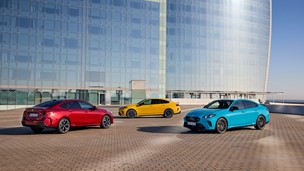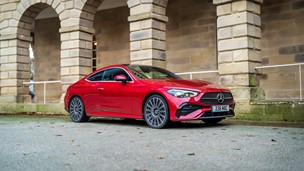The second-generation KA is a new model in more ways than one. It’s very successful predecessor, introduced back in 1996, was based on the Mk3 Fiesta which first appeared seven years before that, and used an engine which dated back to the 1960s.
This one is bang up-to-date, though it's also less of a Ford. It's built by Fiat, in the same Polish factory which also produces the 500, and although the styling details are very different you can see how closely related the two cars are by mentally superimposing one on top of the other - it doesn't look as if it would take much effort to turn the KA into a clone of the 500, or vice versa.
Which car you prefer will probably depend on your views on the 500's appearance. If you think the Fiat is impossibly cute, as we do, then the KA has a fight on its hands; but if you consider the 500's 1950s-pastiche appearance to be a shocking piece of effrontery, as a colleague of mine does, then it's advantage Ford.
Performance
The KA is sold with just one engine – a 68bhp 1.2-litre Duratec petrol. This little unit is capable of propelling the KA from zero to 62mph in 13.4 seconds, going on to a top speed of 99mph.
The 1.2-litre is well-suited to the KA, delivering decent power in and around the city. Naturally, it struggles a little when attempting to overtake at motorway speeds – forcing you to work your way up and down the gearbox to give yourself a boost.
Although there is just one engine available, the KA still manages to keep up with competition as most of its competitors offer either a 1.0-litre or 1.2-litre petrol, achieving the 62mph sprint in just over 14 seconds. So, with a sprint time of 13.4 seconds, the KA wins by a nose.
Ride and Handling
Drive the KA hard and it's beautifully balanced, with excellent power-assisted steering and as much grip as you need.
Ford isn't making a big deal of this, but does like to emphasise that its engineers have put a lot of work into giving the KA its own distinct driving dynamics. In this respect it's pretty much what it looks like, namely a junior version of the Fiesta, and there are good and bad points about that. Drive the KA hard and it's beautifully balanced, with excellent electric power-assisted steering and as much grip as you need. In calmer situations, though, it's not as good. The suspension feels as if it has been optimised for German roads in that it works very well on smooth surfaces but can't deal properly with bumps. You will also notice the suspension is unsettled when it comes to motorway driving. The 16-inch optional wheels make the ride even worse.
Interior and Equipment
The Ford KA shares a platform with the Fiat 500 and is built alongside it. The KA is also built alongside the Fait Panda.
There are four trim levels to choose from in the KA line-up: Studio, Edge, Zetec and Titanium. Realistically, you are not going to go for the entry level Studio trim as kit is very sparse, with the likes of aircon and electric front windows not included. The Edge trim is a bit more of a realistic option, offering the aforementioned as well as remote central locking electric door mirrors, and split folding rear seats. If you are after something with noticeable flair and want to go for the top of the range Titanium trim, you will benefit from chrome door handles, 16-inch alloys, climate control and an improved stereo system. Build quality in the KA is smart-looking but feels quite cheap, with an array of hard plastics dotted around the cabin – but this is pretty much par for the course when it comes to the city car market. Overall comfort when sat at the wheel is good, but Ford need to give the KA’s steering column more flexibility as you cannot adjust for reach, a particular nuisance if you are at either end of the statue scale. Even though the KA shares a lot of its DNA with the Fiat 500, Ford has managed to enhance the storage space in the KA compared to the Fiat 500. This means the KA offers 224 litres of boot storage – compared to the 500’s 185 litres – and this can be extended to 747 litres by folding the rear seats down. In terms of rear passenger comfort, leg room is always going to be an issue in a car this snug, but compared to the old KA model, headroom is noticeably more generous.
Cost
Price wise, the KA has the upper hand on its Fiat 500 rival, undercutting its price.
It goes without saying that Ford’s KA needs an update when it comes to its engine line-up - in terms of frugality anyway. The 68bhp 1.2-litre Duratec petrol emits 115g/km of CO2, meaning unlike many other city cars, the KA does not dodge road tax. Ford needs to step up here and introduce a unit that emits sub 100g/km. The fuel economy of the 1.2-litre could also do with a boost, returning an average of around 57mpg. This is not too bad, but compared to competitors it could be better. Price wise, the KA has the upper hand on its Fiat 500 rival, undercutting its price by a large amount. The KA is however more expensive than the VW up!.
Our Verdict
It can be hard to go toe to toe with competitors when your arsenal is a little out of date. With that said, the KA still goes a good job of holding its own. It has a young and quirk feel about it and it is decent to drive. One of its main criticisms is its efficiency and running costs, but this can be expected of a model that has not had a proper overall since 2009 – especially when you consider the significant engine-downsizing revolution of the last two years. We look forward to Ford putting the KA back on the slab and making some new tweaks.




